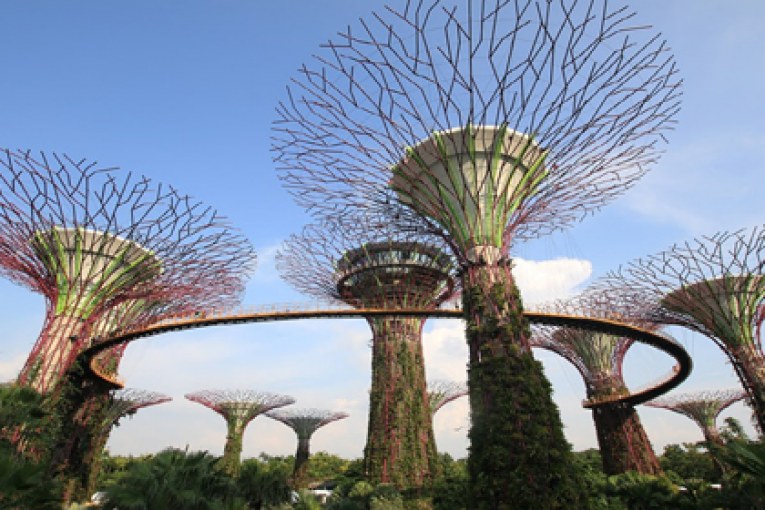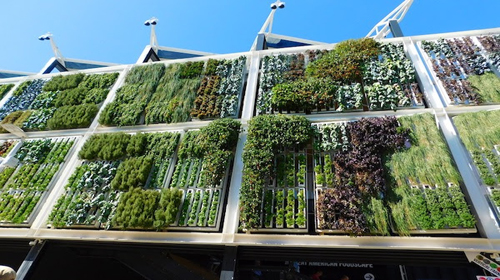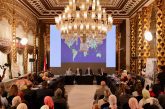
aTP- Arab tourism portal News- Darmstadt, – Sustainable architecture is no longer a niche market. It is just the right time to take a look at destinations, cities, hotels and architects making waves in eco-friendly architecture. The objective is to minimize the environmental impact of buildings in using sustainable materials and renewable and resource-saving energy.
A conscious approach to architecture and infrastructure thereby will also help to emphasize the importance of sustainability in regards to design. There are various new and notable projects that are exemplary in their innovative designs and dedication to create a better, more sustainable world.
architecture-love/unnamed-633333/" rel="attachment wp-att-224616"> Scandinavia – Pioneer of green architecture" width="500" height="280" />
Scandinavia – Pioneer of green architecture" width="500" height="280" />
Scandinavia – Pioneer of green architecture
The increased use of timber in building is an important part of the effort to reduce greenhouse gas emissions. By integrating environmental thinking into their planning process Scandinavia had been a fore-runner of green architecture. Particularly Copenhagen the capital of Denmark has an ambitious green target. Copenhagen aims to become the world’s first CO2 neutral capital by 2025.
Since 1995, Copenhagen has reduced carbon emissions by 50 percent. Various sustainable architecture and infrastructure solutions, like cleaning the harbour area, are responsible for this impressive result. At the same time these solutions helped to increase the quality of live and created awareness for sustainable topics.
architecture-love/unnamed-1-3/" rel="attachment wp-att-224617"> ecologically with a vertical garden" width="500" height="280" />
ecologically with a vertical garden" width="500" height="280" />
Building ecologically with a vertical garden
The Green City Hotel Vauban in Freiburg combines green architecture and social responsibility with the comfort of a modern city hotel. Local businesses are responsible for design and the environmentally-friendly construction with an energy standard at the highest level.
Wall-integrated water-carrying capillary tube mats offer radiative heating and cooling in all rooms. Highly insulated facades with vertical gardens enable efficient temperature equalization with a green impression from the outside.
Heating and hot water is partially sourced from renewable energy, such as the woodcuts combined heat and power station.
Additional energy is generated consequently by an integrated photovoltaic system. Hence the energy consumption is at least 60 per cent below permitted primary energy demand. The Green City Hotel Vauban is an integrative Hotel with half of the employees being disabled.
architecture-love/unnamed-4-7/" rel="attachment wp-att-224618"> garden project in Hamburg" width="500" height="280" />
garden project in Hamburg" width="500" height="280" />
War relic with a green roof – Hilldegarden project in Hamburg
Green roofs are one of the most tangible elements of an eco-friendly strategy, being visible, natural and distinctive.
On many projects, green roofs can be used as a symbol of “greenness” and, as a result for sustainability and biodiversity.
The Hilldegarden in Hamburg is an old war bunker from the 1940s. Nowadays, the war relic is home for graphic-agencies, a music school, a photographer’s studio, a music instrument store and the popular nightclub “Übel & Gefährlich”.
The idea is to build a green roof top garden with a 360-degree view of Hamburg, open to the public until 10pm. Collecting and reusing of water and using energy from rotting wood are only two of many ideas in the energy-saving concept of Hilldegarden.
A public garden will form part of the green landscape dedicated to urban food production. In 2016 the building permission had been granted.
architecture-love/unnamed-5-5/" rel="attachment wp-att-224619"> Patagonia" width="500" height="280" />
Patagonia" width="500" height="280" />
Counting shooting stars in Patagonia
With their domes the EcoCamp Patagonia has established a new style of lodging. Due to their shape they offer a lot of space on the inside while the exterior is green with limited height to perfectly blend with the natural Patagonian environment.
The walls are insulated with thick cushions, ensuring warmth and protection from strong winds. Skylight windows allow guests to follow natural light patterns and to star gaze at night.
Due to the portable design of the domes they can be moved without leaving a trace or damage nature. At night the walkways are lighted very subtly to not disturb animals.
All of the electricity comes from a micro-hydro turbine and photovoltaic panels. EcoCamp Patagonia is certified for its eco-friendly policies, the innovative use of green technology and known as a pioneer of sustainable tourism in Chile.
architecture-love/unnamed55-6/" rel="attachment wp-att-224620"> Hyperions“ – Treehouses in a different style in India" width="500" height="280" />
Hyperions“ – Treehouses in a different style in India" width="500" height="280" />
Hyperions“ – Treehouses in a different style in India
”Hyperions“ is more than only a green roof or a tree house. Belgian architect Vincent Callebaut has designed a 128-meter tall complex with 36 storeys, 1000 apartments, student housing, social areas and office spaces near New-Dehli in India. The six towers are primarily made of wood, harvested from a close forest.
Only the foundations and reinforcements are made of steel and concrete. Callebauts self-sufficient greenhouse design enables vegetables to grow on the balconies and supporting small farms with animal husbandry within the towers.
The eco-friendly structures produce their own energy and heat. Some of the most notable features include electricity-generating wind turbines and solar panels, which are affixed to the towers’ facades. Rainwater and greywater is collected and re-used. The eco-friendly high-rises will produce more energy than they will consume.
The opening is expected in 2020. “Hyperions” is an excellent example of what can be achieved in emerging and developing countries and underlines the importance of sustainable architecture and infrastructure as it supports and connects the communities and creates local jobs.
architecture-love/unnamed-7-3/" rel="attachment wp-att-224621"> Hyperions“ – Treehouses in a different style in India" width="500" height="280" />
Hyperions“ – Treehouses in a different style in India" width="500" height="280" />
Unique CO2 Balance in the Dolomite Alps
The most important goal of sustainable architecture is an energy-efficient construction concept. The Hotel Leitlhof in the Dolomite Alps in South Tyrol is energy-self-sufficient. The hotel disposes of its own cogeneration unit producing electricity with wood chips from the own forest. This considerably reduced the CO2 emission to a minimum.
The owner family implemented different sustainable solutions: the interior is made of regional, local and natural materials, all guests are sleeping in pure cotton bedclothes and the furniture is primarily made of local wood. Furthermore all hotel walls have natural mucky plaster for a good and natural room climate.
All these examples demonstrate, that only sustainable architecture will contribute to a positive future for coming generations.








